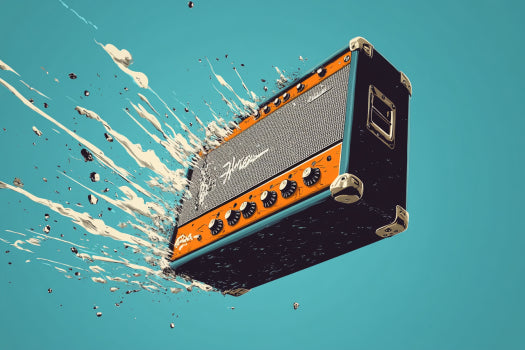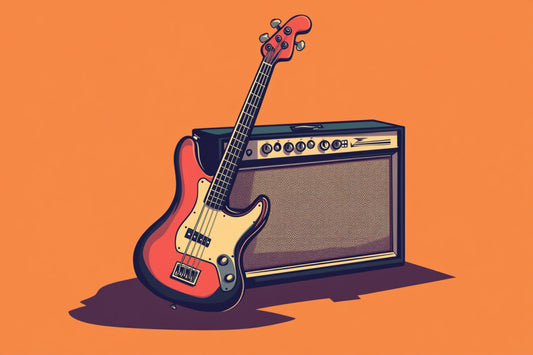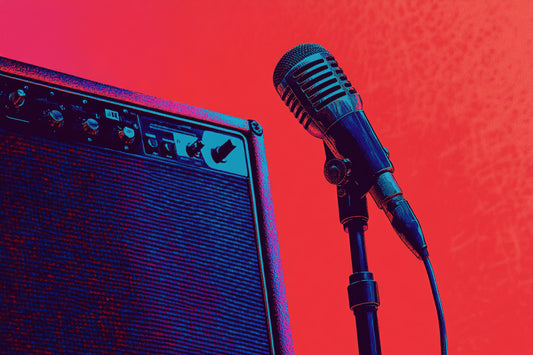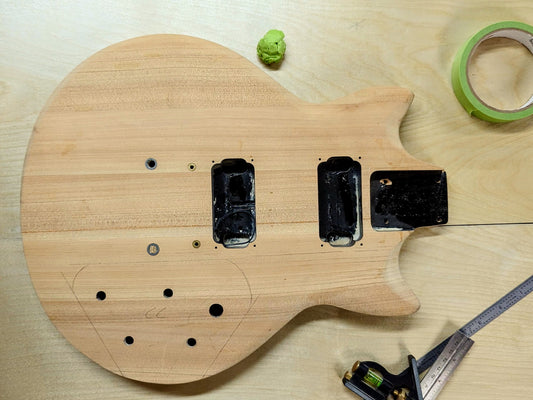
Owning a tube amplifier is like owning a piece of rock history. The rich, warm tones they produce are unmatched, but keeping these amps in top shape requires some attention. While we won’t state the obvious--like not throwing it from a moving vehicle or leaving it outside in the rain--let’s dive into some specific do’s and don’ts to keep your amp warm and buttery for years to come.
Major Issues:
Avoid Rapid Power Cycling
Flipping the power switch off and on in quick succession can damage the power supply. Give your amp a moment to breathe after you switch it off. This allows the capacitors time to slowly discharge before you turn it back on.
Never Run the Amp Without a Speaker Plugged In
This is a cardinal sin in the world of tube amps. Running your amp without a speaker can definitely cause serious damage, so make sure your speakers are properly connected, especially if you’ve been fiddling around with it.
The Big Red Glow
A small orange glow at the ends of the filaments in your tubes is normal. It gives that nice orange nightlight to a dark practice room. A larger red glow over the tubes internal transfer plates, however, means they’re about to melt…. Seriously. If you see this, shut everything down immediately, and consult a technician.
Don’t Ignore Signs of Overheating
If it seems like your amp is overheating, it probably is. Wisps of smoke or burning smells are cries for help from your tube amp. Overheating is not normal, and ignoring it can lead to costly repairs, let alone the risk of fire. Make sure your amp can get adequate airflow, and never block any air vents.
Use the Right Fuses
When a fuse blows, it can be tempting to replace it with a higher amperage one. DON’T! If a fuse blows, it’s for a reason. Fuses are sacrificial, and usually designed to fail as a way to protect a more expensive and critical component in the circuit. Using a higher amperage fuse can put the rest of the circuit at risk to higher power levels it wasn’t designed for, possibly resulting in serious damage. Use the proper replacement for a blown fuse, and if that one blows too, it’s time to consult an amp technician.
Stuff That’s Pretty Safe:
Using the External Speaker Jack
Adding another speaker to the external speaker jack is generally safe. While a mismatched speaker load isn’t ideal, it’s not fatal to your amp (unlike an open circuit, with disconnected speakers). Just don’t use a mismatched speaker for a permanent setup.
Overdriving the Amp
Tube amps can handle a lot of serious overdrive, it’s one of the best things about them. Keep an eye on the tubes, make sure they’re not overheating, and don’t push the overdrive for too long, and the amp should be okay.
General Tips:
- Protect Against Power Surges Tube amps are sensitive to voltage spikes. Using a surge protector or uninterruptible power supply (UPS) can safeguard your amp from electrical surges.
- Handle with Care Tube amps contain delicate components, especially the glass tubes. Avoid dropping or subjecting your amp to constant vibrations. When transporting it, use a padded case for extra protection, if you can.
- Get it Off the Ground Generally speaking, it's best to keep your amp off the floor. Sure, an amp stand will help to protect from spills, pet hair, etc, but the real benefit is in the sound. Directing the speaker toward your ears will do more to improve the sound of your amp than just about anything else. Not to mention isolating the vibrations from the floor, just ask your downstairs neighbors. We're biased (like your tube amp), but we like this one.
- Match Impedance Correctly Ensure your amp and speaker cabinet have matching impedance for the long haul. Mismatched impedance can strain your equipment, and may damage it over time. Double-check ratings before connecting anything.
- Keep it Dry Moisture can cause corrosion and performance issues. Store your amp in a dry environment and avoid using it in damp conditions. If you’re in a humid area, consider using a dehumidifier in your practice space.
- Regular Maintenance Dust and grime can accumulate inside your amp, leading to overheating and malfunctions. Periodically clean your amp and inspect the tubes for wear. Replace any damaged tubes promptly.
- Avoid Extreme Temperatures Store your amp in a climate-controlled environment to prevent damage from extreme heat or cold. Rapid temperature changes can cause condensation, leading to moisture issues.
That's About It
Take good care of your tube amp, and you’ll enjoy those honeyed tones for years to come. Following these tips and avoiding common pitfalls, it’s not hard to keep your amp in prime condition. If you really love your baby, get to know a local amp tech, and call them when something goes wrong.
Remember, your amp is your partner in creating music—treat it with respect, and it’ll keep rocking with you.






